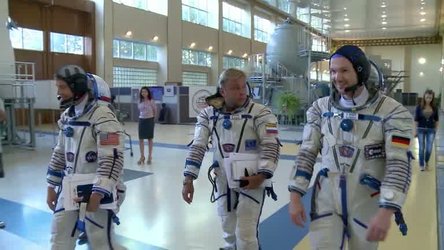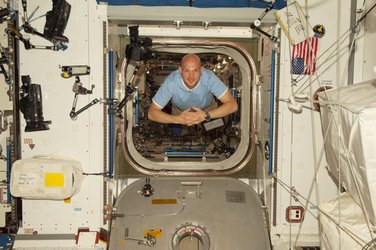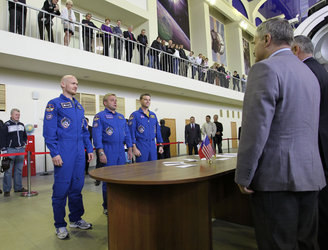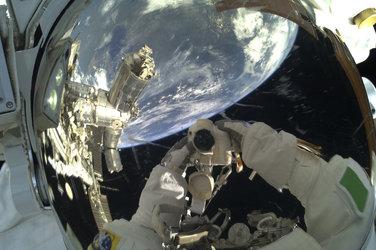An astronaut’s training
Alexander Gerst was selected as an ESA astronaut in 2009 and in the five years between selection and his mission launch he has been training virtually non-stop. Five years of training might seem like a long time, but in Alexander’s own words: “When you consider that new astronauts must learn a completely new profession before heading into space, as if studying at university, it does not appear quite so long.”
Alexander’s first 18 months covered basic training with his classmates ESA astronauts Luca Parmitano, Samantha Cristoforetti, Andreas Mogensen, Timothy Peake and Thomas Pesquet. Basic training included general survival-skill training in Italy, scuba diving at the European Astronaut Centre in Cologne, Germany and lessons in Russian, orbital mechanics and piloting.
On a Space Station mission we have to be jack-of-all-trades, and that is why we train so long for each mission. We must be scientists, janitors, drivers, cleaners, doctors, fire-fighters, engineers and guinea pigs
Astronauts are chosen from a variety of professional and cultural backgrounds and each astronaut has to be bought up to speed on a wide variety of knowledge.
Alexander was chosen for Blue Dot almost immediately after he had completed basic training. This meant that the pace increased as the astronaut was taught more about his future home for six months: the International Space Station.
Almost three years of intensive mission training saw Alexander visit the facilities of all the Station partners. From his home base in Cologne, Alexander sometimes worked 60-hour weeks in Japan, Canada, Russia and the US.


Access the video
He was taught how to fly the Station’s robotic arm in Montreal, Canada, learnt how to work in the Japanese Kibo laboratory in Tsukuba Space Center, Japan, dived underwater to practise spacewalks on a life-size mockup of the Station in Houston, USA and earned his space-wings on the Soyuz simulator at the Yuri Gagarin Cosmonaut Centre at Star City, Russia.
The true art of being an astronaut is to filter out the relevant stuff from the flood of complex information we receive
As the mission deadline neared, training focused on individual equipment and experiments that Alexander ran during his mission. In the final weeks before launch, the crew passed a formal examination in a centre near Moscow, Russia which officially declared them ready to fly the Soyuz spacecraft.

But the training does not stop there. Imagine operating the Station’s robotic arm or monitoring the arrival of ESA’s 20-tonne ATV space freighter – one wrong move and you could bring your crewmates and yourself into a dangerous situation, not to mention risking millions of euros. If the last time you trained on a specific task was months before your mission, it would be understandable if you were nervous. For this reason, Alexander and crewmates took refresher courses while on the Station to review procedures.


Access the video














 Germany
Germany
 Austria
Austria
 Belgium
Belgium
 Denmark
Denmark
 Spain
Spain
 Estonia
Estonia
 Finland
Finland
 France
France
 Greece
Greece
 Hungary
Hungary
 Ireland
Ireland
 Italy
Italy
 Luxembourg
Luxembourg
 Norway
Norway
 The Netherlands
The Netherlands
 Poland
Poland
 Portugal
Portugal
 Czechia
Czechia
 Romania
Romania
 United Kingdom
United Kingdom
 Slovenia
Slovenia
 Sweden
Sweden
 Switzerland
Switzerland


















































